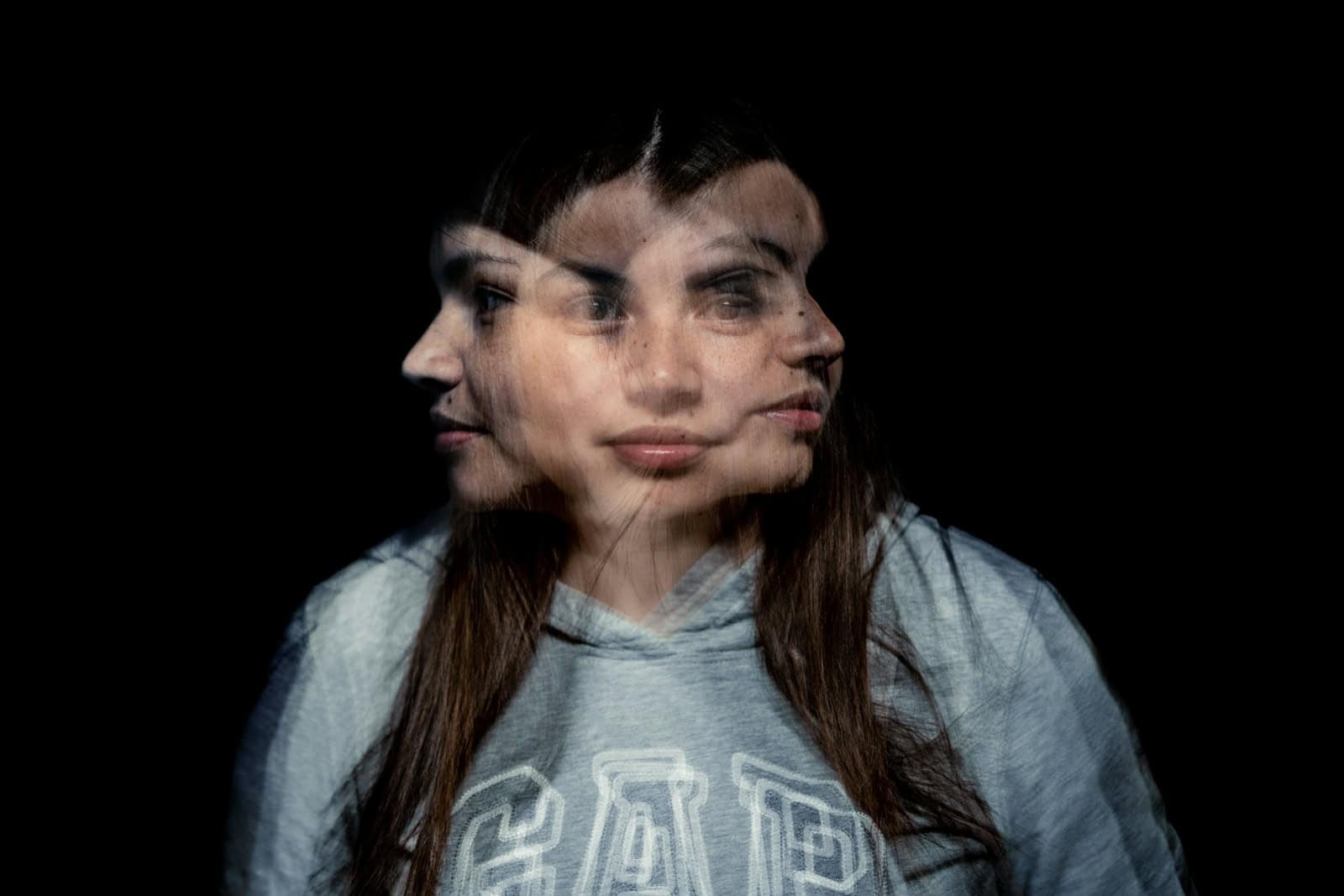Deepfake technology has advanced from a niche internet curiosity to a powerful—and often controversial—tool accessible to almost anyone with an internet connection. In 2025, creating realistic face-swapped videos or synthetic voiceovers doesn’t require Hollywood-level resources or technical expertise. Whether for entertainment, education, accessibility, or malicious intent, deepfake creation has become faster, more intuitive, and more widespread.
As the quality of synthetic media improves, so does the number of platforms offering deepfake creation tools. But with that growth comes a wide range of ethical concerns, legal implications, and feature differences that users should understand before diving in. This guide highlights the most powerful deepfake services of 2025, how the technology works, and what to watch out for.
What Is Deepfake Technology?
At its core, deepfake technology uses deep learning—a subset of AI—to superimpose someone’s face, voice, or movements onto another person in a video, audio recording, or image. It relies on generative adversarial networks (GANs) or encoder-decoder models that learn patterns in facial expressions, vocal tone, and body movement to synthesize new media that mimics reality.
Applications range from lighthearted content (memes and entertainment videos) to commercial uses (virtual avatars, localized marketing, dubbing) and serious concerns (disinformation, identity theft, and non-consensual explicit content).
The Best Deepfake Platforms of 2025
1. Speechify AI Voice Over Generator
One of the most intuitive voice-cloning tools in the market, Speechify stands out for its ability to generate lifelike speech in real time without requiring user registration. With over 30 natural-sounding voices and a rapid 30-second cloning process, it’s widely used in audiobooks, podcasts, accessibility solutions, and marketing content. Compared to rivals like Resemble.ai and Descript, Speechify is easier to use for non-developers.
Use Cases: Narration, educational content, virtual characters, voiceovers for YouTube and TikTok.
2. Sensity AI Deepfake Detection Software
As deepfakes become harder to detect, Sensity AI has emerged as the industry’s frontline defense. Used by governments, media companies, and social platforms, Sensity uses multi-layered scanning—pixel analysis, audio scrutiny, metadata checks—to identify synthetic content.
It’s also the force behind the Deepfake Offensive Toolkit, used by security professionals to understand how fake content is generated and weaponized.
Notable Use: During the 2024 U.S. elections, Sensity helped social media platforms identify and remove AI-generated political misinformation.
3. DeepfakesWeb Video Creator
For users interested in simple face-swapping, DeepfakesWeb provides a web-based experience with no need for local processing. It supports short clips and uses auto-alignment technology for better face blending.
Limitations: Processing can be slow on free plans, and results may vary based on lighting and face angles.
Best For: Beginners and casual users who want to experiment with face swaps.
4. Virbo AI Deepfake Maker
Virbo takes mobile deepfake creation mainstream. With its mobile app, users can generate AI avatars from selfies, complete with custom voice scripts. It’s especially popular on platforms like TikTok and Instagram where users create talking avatars or lip-sync videos.
Recent Upgrade: Integration with ChatGPT-style LLMs allows Virbo to auto-generate scripts and even replicate emotional tone.
5. DeepFaceLab Toolset (v2.0)
Still the gold standard for professional creators, DeepFaceLab remains the most powerful (and complex) tool for full-control face-swapping. It’s open source and allows users to train their own models for maximum realism.
Requirements: High-end GPU, steep learning curve, and significant processing time.
Pro Use Case: Filmmakers, VFX artists, and meme creators with technical backgrounds.
6. Lensa AI Deepfake Portraits
While not a deepfake in the traditional video sense, Lensa AI gained viral popularity by transforming selfies into stylized avatars—fantasy, anime, cyberpunk, etc. It uses facial data to generate new portraits with AI-driven filters.
Noteworthy Trend: Lensa sparked 2025’s “AI Selfie Art” wave, inspiring thousands of users to share AI-enhanced portraits on social media.
7. DeepBrain AI Studios
DeepBrain is the go-to tool for businesses creating explainer videos and digital avatars. Its text-to-video feature lets users input a script and choose from 100+ pre-made digital presenters.
Key Advantage: No filming or voice recording needed—ideal for internal training content, virtual customer support, and e-learning.
8. AnyoneSwap Face Swap Tool
If you’re looking for a quick laugh or meme creation, AnyoneSwap is the most user-friendly free tool on the list. Just upload a photo, pick a target, and watch the swap happen.
Limitations: Best for static images; video swaps are lower in quality.
9. DeepArtEffects
DeepArtEffects focuses on stylization rather than impersonation. It uses neural style transfer to apply famous painting styles (like Van Gogh or Picasso) to your photos or videos.
Great For: Artists, social media content creators, and those interested in AI art rather than identity manipulation.
10. MyHeritage Deep Nostalgia
A more sentimental use of deepfake tech, MyHeritage animates old family photos, letting users watch their ancestors blink, smile, and move. The tool exploded on platforms like TikTok for its emotional appeal.
Warning: Results can be uncanny and raise emotional and privacy questions, especially when used without family consent.
How Deepfakes Are Made in 2025
Modern tools have significantly lowered the barrier to entry. While early deepfakes required days of GPU training and massive datasets, today’s platforms can operate from a single selfie or voice clip. Still, high-quality results benefit from:
- Multiple angles of the subject’s face
- Clear audio samples for voice cloning
- Consistent lighting and head movement
- Sufficient computing power or access to cloud rendering
Advanced platforms use 3D facial modeling, emotion mapping, and audio-visual synchronization to increase realism.
Societal Impact: Risks and Benefits
The Upside
- Education & Accessibility: Text-to-speech avatars can deliver lectures or provide narration for the visually impaired.
- Entertainment & Creativity: Artists and filmmakers can cast digital versions of people for satire or storytelling.
- Cultural Preservation: Animated history projects can bring past figures to life for museums or documentaries.
The Downside
- Misinformation: Fake videos of politicians or celebrities can sway opinion or incite violence.
- Harassment: Deepfake porn and revenge content remain a growing threat.
- Evidence Tampering: The legal system may struggle to determine video authenticity.
Legal Landscape in 2025
Countries around the world are developing strict regulations for synthetic media:
- United States: States like California and Texas ban political deepfakes during election periods and criminalize non-consensual adult deepfakes.
- European Union: The AI Act and Digital Services Act mandate disclosure for AI-generated content and hold platforms accountable for harmful media.
- China: Requires watermarks and public labeling of synthetic content.
Platforms like TikTok, Meta, and YouTube have begun flagging and removing deepfake content that violates transparency standards.
What to Look For in a Deepfake Tool
| Feature | Why It Matters |
|---|---|
| Cloud-Based Processing | Avoids the need for expensive hardware |
| Real-Time Rendering | Saves time during production |
| Voice + Face Support | Combines full-media synthesis |
| Privacy Controls | Essential for data security |
| Script Input or Auto-Generation | Speeds up video creation |
| Detection or Watermarking | Encourages ethical use |
Final Thoughts
Deepfake technology in 2025 is no longer just a curiosity—it’s a mainstream tool that touches entertainment, education, marketing, and security. But with great power comes significant responsibility. Understanding the capabilities, risks, and ethical boundaries of these tools is crucial for anyone entering this space.
For content creators, researchers, educators, or the simply curious, the key to using deepfakes safely and effectively is transparency, consent, and a commitment to not crossing ethical lines—even when the technology makes it easy to do so.
1. Speechify AI Voice Over Generator
Speechify offers a leading solution for creating deepfake voices with its AI Voice Over Generator. This tool allows users to generate human-quality voice recordings in real time, making it useful for narrating text and other voice applications.
The platform stands out for its efficiency, letting users clone voices in just 30 seconds without requiring signup. This accessibility makes it appealing for both beginners and professionals looking to create realistic voice content quickly.
Unlike some deepfake technologies, Speechify’s voice cloning works by training models using voice data from the original voice. The system captures the unique qualities of a voice including tone, pitch, and cadence to create authentic-sounding replications.
The Speechify tool ranks as one of the best deepfake voice generators available today. Its user-friendly interface makes complex voice technology accessible to people without technical backgrounds.
For website owners, Speechify provides website voice over capabilities that can enhance user experience and accessibility. This feature turns written content into spoken audio, potentially increasing engagement and making content more accessible.
Compared to other options like Resemble.ai, Respeecher, FakeYou, and Descript, Speechify maintains competitive features while focusing on ease of use. The straightforward process helps users avoid the technical hurdles often associated with voice cloning technology.
Content creators particularly appreciate Speechify’s real-time capabilities, which allow for quick iterations and adjustments to voice projects. This responsiveness saves valuable production time compared to traditional voice recording methods.
The technology continues to improve, with regular updates enhancing the natural sound and emotional range of the generated voices.
2. Sensity AI Deepfake Detection Software
Sensity AI offers one of the most advanced deepfake detection software solutions available in 2025. The platform uses a comprehensive approach to identify manipulated media across videos, images, and audio files.
Their technology examines content at multiple levels to ensure accuracy. The system looks at pixels, analyzes file structures, and evaluates voice patterns to spot fake media.
Defense organizations particularly benefit from Sensity’s capabilities. The platform helps identify and neutralize deepfake threats with high precision, protecting sensitive information and preventing misinformation campaigns.
What sets Sensity apart is its multilayer detection approach. Rather than relying on a single method, the software combines several techniques to improve detection rates and reduce false positives.
The platform also stands out for its ease of use. Despite the complex technology working behind the scenes, users can get comprehensive assessments without needing technical expertise.
For security researchers, Sensity provides additional tools beyond detection. The company maintains the Deepfake Offensive Toolkit on GitHub, which helps security professionals understand how deepfakes work by creating them in controlled environments.
Many organizations rank Sensity among the top 10 AI deepfake detection tools. Its reputation stems from consistently accurate results and regular updates to counter new deepfake methods.
The software works in real-time, allowing organizations to screen media as it arrives rather than after potential damage occurs. This immediate response capability proves crucial during time-sensitive situations like election periods or breaking news events.
Sensity’s development team continuously improves their algorithms to stay ahead of increasingly sophisticated deepfake technology. They update their detection methods as new manipulation techniques emerge.
3. Deepfakesweb Video Creator
Deepfakesweb offers an AI-powered cloud-based app that lets users create face swap videos with minimal effort. Unlike many competitors, it works entirely online, eliminating the need for software installation or high-end computer hardware.
The platform uses artificial intelligence and deep learning technology to generate realistic face swaps in videos. Users simply upload their videos and click a button to start the process.
The interface is straightforward and user-friendly. Even people with no technical background can create convincing deepfakes without understanding the complex AI mechanisms working behind the scenes.
Deepfakesweb operates on a premium plan model for those wanting more advanced features. The paid version provides better quality outputs and additional customization options compared to free alternatives.
One advantage of this platform is its accessibility. Since everything happens in the cloud, users can create deepfakes from any device with an internet connection, including smartphones and tablets.
The quality of face swaps depends on several factors including the clarity of source materials and facial similarities. Better inputs typically yield more convincing results.
Privacy concerns are addressed through the cloud-based system. Videos are processed on remote servers rather than locally, though users should always review any service’s privacy policy before uploading personal content.
Deepfakesweb positions itself as an easy-to-use option among the growing number of deepfake creation tools. It balances simplicity with reasonable output quality for casual users.
The technology continues to improve as AI advances. Regular updates enhance face detection algorithms and blending techniques, resulting in increasingly realistic outputs over time.
4. Virbo AI Deepfake Maker
Virbo AI Deepfake Maker stands out as a user-friendly platform for creating realistic face-swap videos. The tool uses advanced AI technology to swap faces in videos with just a few clicks.
Users can create custom avatar videos complete with scripts and voice clones. The platform also offers interactive motion features that make the deepfake videos appear more lifelike.
One key advantage of Virbo is its simplicity. Even beginners without technical expertise can create convincing deepfakes using the intuitive interface.
The platform provides both free and paid options. However, the free version has some limitations compared to the premium features.
Virbo works by analyzing facial features and applying them to target videos. This process creates natural-looking results that can be hard to distinguish from original footage.
The mobile app version makes creating AI videos even more accessible. Users can generate talking videos from a single photo using their smartphones.
Processing time varies depending on the complexity of the project. For some deepfake videos, the creation process might take several hours to complete, especially when using free options.
Virbo offers various effects and styles to enhance deepfake videos. These additional features help users customize their creations according to specific needs.
The platform continues to update its technology to improve realism and efficiency. Recent versions have reduced processing time while maintaining high-quality output.
For content creators and social media enthusiasts, Virbo provides an accessible entry point into deepfake technology. The results can be used for entertainment, creative projects, or educational purposes.
Security measures are in place to prevent misuse of the technology. Users should always consider ethical implications when creating deepfake content.
5. DeepFaceLab Toolset
DeepFaceLab stands as the leading software for creating deepfakes in 2025. It offers powerful tools for face swapping in videos, giving users control over the final result. Many serious deepfake creators prefer this open-source option for its extensive capabilities.
Unlike simpler apps, DeepFaceLab doesn’t offer a “make everything ok” button. Users need to spend time learning the workflow and developing their skills to create realistic results. This learning curve, while steeper, leads to higher quality outputs.
The software has maintained its position as the most popular deepfake toolset for years. It continues to be the go-to choice for those wanting professional-level face swaps, even though it has remained on version 2.0 for some time.
DeepFaceLab requires more technical knowledge than online alternatives. Users will need a decent computer with a good graphics card to run the software effectively. The processing time varies based on hardware specifications and video length.
The toolset includes various training models that let users adjust details like facial features, lighting, and expressions. These options help create more convincing deepfakes that match the target video’s conditions.
For beginners, DeepFaceLab might seem overwhelming at first. However, many online tutorials and community forums can help new users understand the basics. The DeepFaceLab GitHub page offers documentation to get started.
Despite newer alternatives appearing on the market, DeepFaceLab remains the standard for quality deepfake creation. Its continued popularity speaks to its effectiveness and the quality of results it produces when used properly.
6. Lensa AI Deepfake Portraits
Lensa AI has become one of the most popular photo editing apps that creates AI-generated portraits from your selfies. This app transforms ordinary photos into artistic avatars using artificial intelligence technology.
Lensa AI works by processing several selfies you upload and then generating stylized portraits. Unlike basic filters, it creates completely new artistic interpretations of your face.
The app gained massive popularity on social media when users began sharing their AI portraits. Many people enjoy seeing themselves transformed into fantasy characters, anime styles, or painterly portraits.
To use Lensa for deepfake portraits, you need to download the app from the App Store or Google Play. Then upload 10-20 selfies showing different angles and expressions of your face.
The process takes several minutes as the AI analyzes your features and creates unique avatars. The app offers various style packs that determine the artistic direction of your portraits.
While Lensa isn’t technically a “deepfake” in the traditional sense, it uses similar AI technology to transform images. The app falls into the broader category of AI image manipulation tools that have become trending topics online.
Some privacy experts raise concerns about uploading multiple selfies to such services. Before using Lensa, it’s wise to review their privacy policy regarding how they handle your photos.
The photo editing capabilities extend beyond just avatar creation. Lensa also offers more traditional editing tools like retouching and removing unwanted objects from photos.
Unlike some other deepfake tools, Lensa focuses specifically on artistic transformations rather than placing your face in videos or other people’s bodies. This makes it more socially acceptable and less controversial than other deepfake applications.
The app operates on a subscription model but offers free trials to test the avatar creation feature. Many users find the results impressive enough to share across their social media accounts.
7. DeepBrain Video Creator
DeepBrain stands out as a powerful web-based deepfake software that creates remarkably authentic videos. The platform uses advanced AI technology to transform simple text into professional-quality deepfake content.
What makes DeepBrain special is its library of over 100 realistic AI avatars representing different ages, ethnicities, and roles. Users can select the perfect digital spokesperson for their project in minutes.
The AI Studios platform from DeepBrain allows anyone to generate videos quickly using just text prompts. This accessibility makes complex video creation possible even for those without technical expertise.
The quality of DeepBrain’s output is impressive. Their system produces visually stunning videos that maintain natural expressions and movements. This attention to detail helps the final product appear more authentic.
For businesses looking to create professional videos without hiring actors, DeepBrain offers a cost-effective solution. The platform’s text-to-speech AI technology enables users to generate custom voiceovers alongside the visual elements.
Users appreciate the streamlined workflow that DeepBrain provides. The interface is designed to be straightforward, allowing for quick video creation without a steep learning curve.
Though powerful, DeepBrain maintains ethical standards for its technology use. The company encourages responsible application of deepfake technology for legitimate business and creative purposes.
The platform works entirely online, eliminating the need for powerful hardware or software installation. This cloud-based approach gives users flexibility to create videos from any device with internet access.
8. AnyoneSwap Face Swap Tool
AnyoneSwap is a user-friendly AI face swap tool that lets people switch faces in photos and videos without complicated steps. The platform works well for beginners who want to try face swapping without technical knowledge.
Users can create funny images by swapping their face onto celebrities, characters, or friends. The service operates online, so there’s no need to download or install any software on your device.
One of the main advantages of AnyoneSwap is its free option. While many similar services charge fees, AnyoneSwap offers a basic version that costs nothing to use.
The quality of face swaps created with AnyoneSwap is good for casual use. The results look realistic enough for social media posts and jokes among friends. However, professional projects might require more advanced tools.
AnyoneSwap has gained popularity among casual users and digital artists because it’s so accessible. The interface is simple enough that even first-time users can figure it out quickly.
For marketing teams, AnyoneSwap offers an affordable entry point into face swap technology. Small businesses can create engaging content without investing in expensive software or hiring specialists.
The platform allows unlimited face swaps, letting users experiment with different looks and styles. This feature makes it great for creative projects where multiple options need testing.
Unlike some complex deepfake tools, AnyoneSwap focuses on simplicity rather than advanced features. This approach makes it perfect for quick, fun projects but less suitable for sophisticated video productions.
9. DeepArtEffects Art Generator
DeepArtEffects turns your regular photos into artistic masterpieces using AI technology. This platform lets you apply various artistic styles inspired by famous painters to your images.
The service works on both photos and videos, making it versatile for creative projects. Users can transform selfies, landscapes, or any image into something that looks like it was painted by a master artist.
Available as both a mobile app and website, DeepArtEffects offers flexibility in how you access its tools. The mobile version is particularly handy for quick edits on the go.
What sets DeepArtEffects apart is its focus on high-quality artistic transformations. The app uses neural art transfer technology to analyze both your photo and the artistic style, then blends them together convincingly.
For those just getting started with AI image editing, DeepArtEffects offers an accessible entry point. The interface is straightforward, allowing even beginners to create impressive artistic renditions.
The DeepArtEffects AI Photo Editor on the App Store has gained popularity among creative professionals and casual users alike. It provides numerous filters based on different artistic styles.
While not strictly a deepfake tool in the traditional sense, DeepArtEffects belongs in the broader category of AI image manipulation. It changes the style rather than identity or content of the image.
For users looking to experiment with creating artistic composites or mosaics, this platform offers promising capabilities. Some users on Reddit have discussed using it for creating Deep Style images with custom styles.
10. My Heritage Deepfake App
MyHeritage offers a unique approach to deepfake technology with its popular Deep Nostalgia feature. Unlike many other deepfake tools, it focuses on animating faces in still photos, bringing old family pictures to life.
The app gained significant attention on social media platforms like TikTok. Users can upload historical family photos and watch as their ancestors’ faces animate with realistic movements and expressions.
MyHeritage uses video reenactment technology to create high-quality, realistic footage from still images. The technology is surprisingly simple to use, making it accessible even for those with limited technical skills.
What makes MyHeritage stand out is its specific purpose. Rather than creating completely fabricated videos, it aims to add motion to existing photos. This gives users a chance to see their ancestors or deceased loved ones “move” in a respectful way.
The app became a social media sensation when people began sharing animated versions of old family photos online. Many users report emotional reactions when seeing their grandparents or great-grandparents seemingly come to life.
As of 2025, MyHeritage continues to be ranked among the top deepfake applications available to the public. Its focused approach and ease of use keep it popular despite newer competitors entering the market.
Unlike some deepfake tools that require subscription fees, MyHeritage offers its basic animation features for free. This accessibility has contributed to its widespread adoption among casual users interested in family history and photography.
The technology works best with clear, front-facing portraits. Users should note that results vary based on the quality and angle of the original photograph.
Understanding Deepfake Technology
Deepfake technology uses artificial intelligence to create realistic fake videos or images by swapping one person’s face onto another’s body. These synthetic media have evolved rapidly in recent years, becoming more accessible and increasingly difficult to detect.
How Deepfakes Are Created
Deepfakes are made using a type of AI called deep learning. The process involves training neural networks on existing images or videos of a person to learn their facial features and expressions. This is called a specific kind of synthetic media that swaps one person’s likeness with another.
The creation process typically needs:
- Large datasets of the target person’s face from different angles
- Powerful computers with good graphics processing units
- Encoder-decoder networks that learn to reconstruct faces
- Time for training the AI (though this is getting shorter)
Some deepfakes can be made with just a single photo, though the quality improves with more data. Modern deepfake tools have simplified what once required technical expertise, making this technology available to almost anyone with a computer.
Impact of Deepfakes on Society
Deepfakes pose serious concerns for truth and trust in media. They can be used to create fake news, political manipulation, or non-consensual intimate content of real people. This technology blurs the line between real and fake content.
Some impacts include:
- Misinformation spread – False videos of public figures saying things they never said
- Identity theft risks when faces are used without permission
- Evidence problems in legal settings where video can no longer be trusted
- Positive uses in scientific research, education and film production
Researchers are working on detection methods to identify AI-generated content. Many tech companies are developing tools that can spot subtle inconsistencies in deepfakes that human eyes might miss.
Legal and Ethical Considerations
The use of deepfake technology raises significant legal questions and moral concerns that anyone using these websites should understand. Laws vary by country, and ethical boundaries aren’t always clear.
Regulations Surrounding Deepfakes
Many countries are developing or have implemented laws specifically targeting deepfakes. In the United States, several states have enacted legislation that prohibits using deepfakes for political manipulation or pornographic content. California’s AB 730 bans the distribution of manipulated political videos before elections.
The European Union addresses deepfakes through its Digital Services Act and AI Act, focusing on transparency requirements. These laws demand clear labeling when content has been artificially generated or manipulated.
Users should be aware that creating certain types of deepfakes may lead to:
- Defamation lawsuits
- Copyright infringement claims
- Privacy violation penalties
- Identity theft charges
Ethical Issues in Deepfake Usage
The ethical implications of deepfakes go beyond legal concerns. Creating fake videos without consent raises serious privacy and dignity questions. Even when legal, generating someone’s likeness may violate their personal autonomy.
Deepfakes can damage reputations instantly. A convincing fake video can spread rapidly online before the truth emerges. This technology has been used to create non-consensual intimate imagery, target journalists, and spread misinformation during elections.
Media literacy becomes crucial as the line between real and fake blurs. The technology raises questions about consent, truth, and accountability in digital media. Responsible use requires considering potential harms to individuals and society.
Users should question their intentions when creating deepfakes and consider whether their actions respect others’ rights and dignity.
Frequently Asked Questions
Deepfake websites vary in quality, legality, and safety features. Users should understand what makes these platforms worthwhile before committing their time or money.
What features should I look for in a high-quality deepfake service?
The best deepfake websites offer intuitive interfaces that don’t require technical expertise. Look for platforms with high-resolution output capabilities and reasonable processing times.
Face swapping accuracy is crucial – premium services like Deepfakesweb Video Creator offer better edge detection and blending between the source face and target video.
Cloud-based processing is another important feature, as it eliminates the need for powerful hardware. Many top services like Virbo AI Deepfake Maker handle all processing on their servers.
How can I ensure my safety and privacy when using deepfake websites?
Always check the privacy policy before uploading any content. Quality services will clearly explain how they handle your data and whether they retain uploaded images.
Use websites that offer encryption for your uploads and don’t require excessive personal information. Consider services that automatically delete your content after processing.
Tools like Sensity AI Deepfake Detection Software can help verify whether content has been manipulated, adding an extra layer of security to your deepfake interactions.
Which platforms are known for producing the most realistic deepfake videos?
DeepFaceLab Toolset stands out for professionals seeking high-quality results, though it requires technical knowledge and powerful hardware.
For user-friendly options, Speechify AI Voice Over Generator produces remarkably realistic audio deepfakes that sync well with video content.
The realism often depends on the quality of input material – platforms require clear, well-lit face images from multiple angles for best results.
What are the legal implications of using deepfake technology for content creation?
Deepfake technology exists in a complex legal landscape that varies by country. Creating deepfake content without consent may violate privacy laws, especially for non-consensual intimate images.
Copyright issues arise when using celebrities or protected content. Some countries have enacted specific legislation targeting malicious deepfakes used for disinformation.
Commercial use requires particular care, as using someone’s likeness without permission could lead to right of publicity lawsuits.
Are there any trustworthy reviews of deepfake services that can guide my choice?
Technology review sites often publish comparative analyses of different deepfake platforms. Look for reviews that include sample outputs rather than just descriptions.
User forums like Reddit contain threads where actual users share their experiences with various services and often post examples of results.
Avoid reviews that seem overly promotional or lack specific details about performance, as these may be sponsored content rather than honest evaluations.
What advancements in deepfake technology have been made recently to improve authenticity?
Recent advancements include improved lighting physics simulation, which helps deepfakes maintain realistic lighting effects when subjects move.
AI models now better handle edge cases like profile views and extreme expressions that previously revealed fakery.
Voice synthesis technology has evolved significantly, allowing for more convincing audio deepfakes that match the emotional tone and cadence of the target person.





